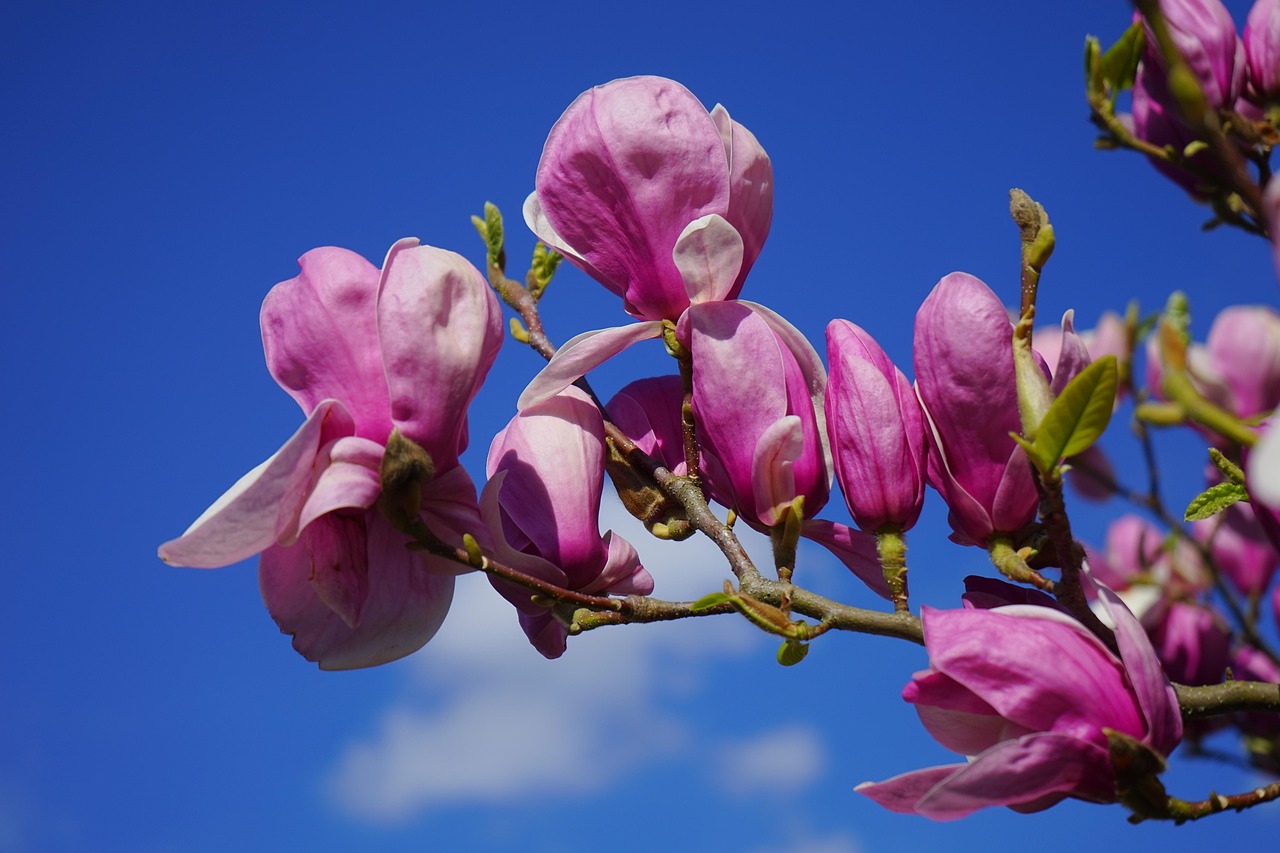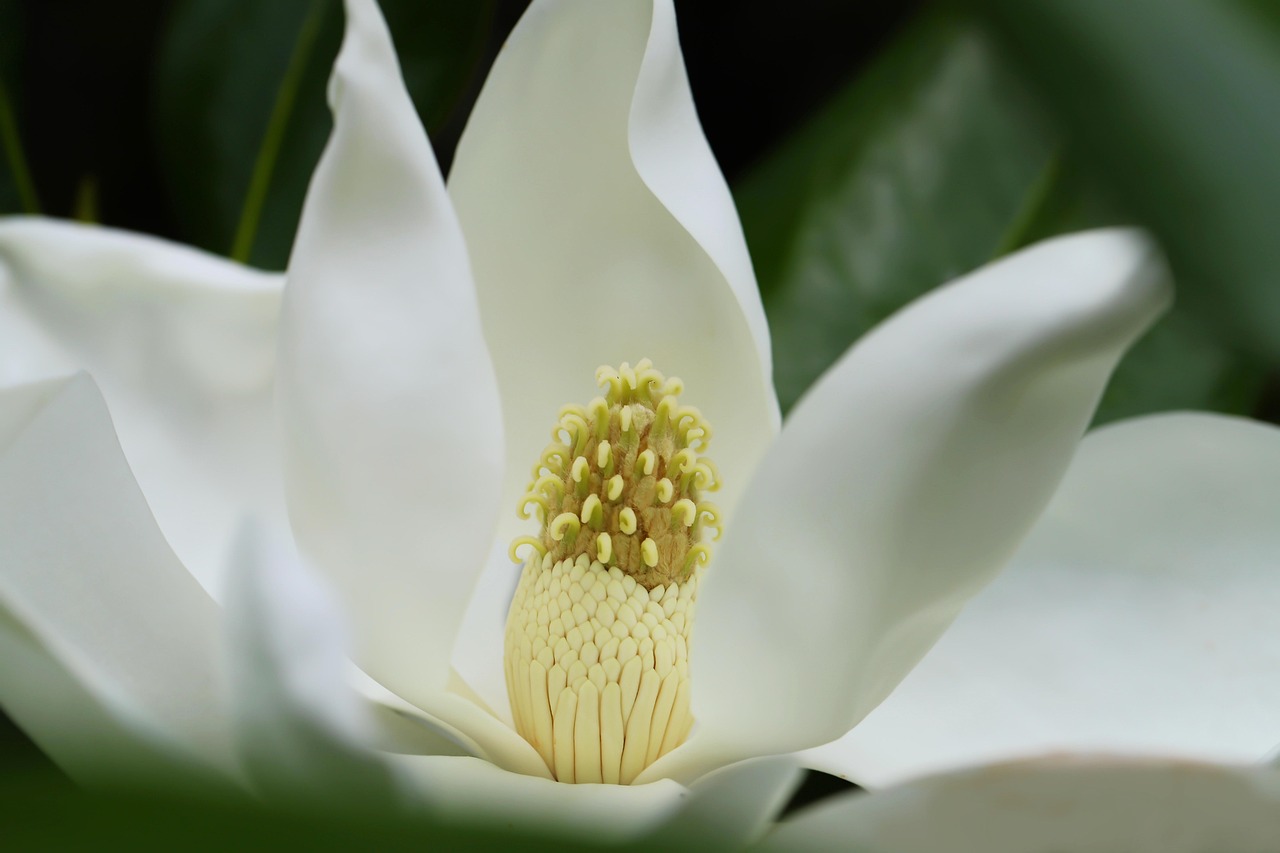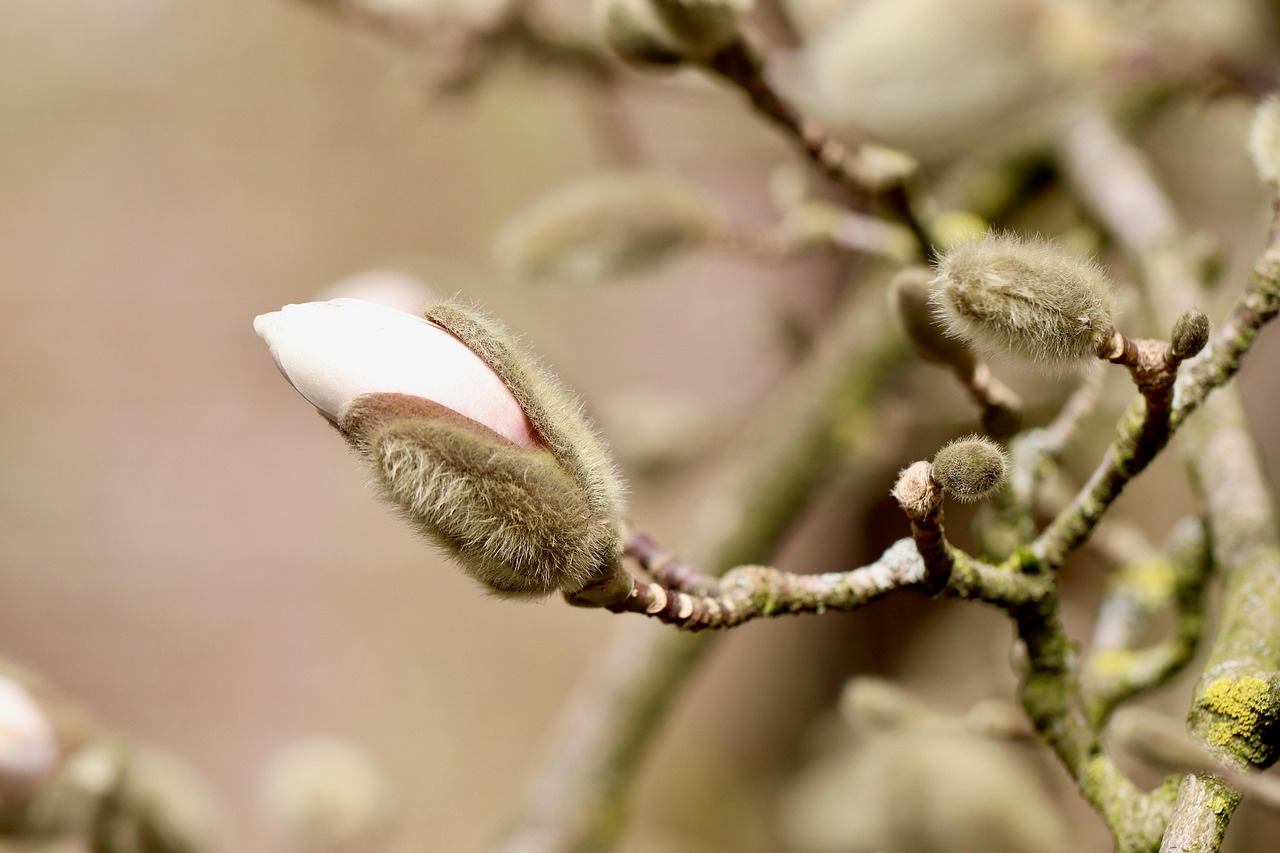The Magnolia tree that blooms purple is primarily the Southern Magnolia, specifically the variety known as “Magnolia denudata” or “Yulan Magnolia.” This tree features stunning, fragrant purple flowers that add beauty to any landscape.
Magnolias are among the oldest flowering plants on Earth. They are renowned for their large, striking flowers, which can range in color from white to deep purple. The unique appearance and captivating fragrance of these blooms make them popular in gardens and parks. Among the various types of magnolias, some specifically stand out for their purple flowers, attracting gardeners and nature enthusiasts alike.
This article will explore the stunning varieties of magnolia trees that produce purple blooms. Understanding these varieties can help you choose the right tree for your garden or landscape. Many magnolia species have diverse characteristics, including different flower shapes, sizes, and blooming times. This diversity makes them a versatile choice for various gardening styles.
Popular Purple-Blooming Magnolia Varieties

When considering magnolia trees with purple flowers, several notable varieties come to mind. Each has its unique features that contribute to its appeal. Below are some of the most popular purple-blooming magnolia varieties:
- Magnolia denudata ‘Jane’: This hybrid variety produces large, cup-shaped flowers that are deep purple on the outside and white on the inside. It typically blooms in early spring.
- Magnolia liliiflora ‘Nigra’: Known as the black tulip magnolia, this variety has rich, dark purple petals that resemble tulips. The flowers are fragrant and bloom in mid-spring.
- Magnolia x soulangeana ‘Purple Sensation’: This hybrid features large, goblet-shaped flowers that are a vibrant purplish-pink. It is a popular choice for gardens due to its stunning visual impact.
- Magnolia ‘Galaxy’: This variety produces large, star-shaped blooms that are deep purple with a fragrant scent. It is appreciated for its vigorous growth and beautiful foliage.
Each of these varieties brings something special to the table. They can thrive in various climates and soil types, making them versatile choices for home gardeners.
Growing Conditions for Purple-Blooming Magnolias
To successfully grow purple-blooming magnolias, it’s important to consider their specific growing conditions. These trees generally prefer well-drained soil and should be planted in areas with full sun to partial shade. Here are some essential factors to keep in mind:
| Growing Factor | Recommendation |
|---|---|
| Soil Type | Well-drained, loamy soil |
| Sunlight | Full sun to partial shade |
| Watering | Regular watering, especially during dry spells |
| Fertilization | Balanced fertilizer in early spring |
With proper care and attention, purple-blooming magnolias can thrive and bring beauty to any landscape. These trees can grow fairly large, so it’s essential to choose an appropriate location with enough space for them to flourish.
In addition to their beauty, magnolias often have cultural significance. Various cultures celebrate these trees for their elegance and grace. In many regions, they symbolize dignity and nobility. This makes them not just a gardening choice but also a meaningful addition to gardens.
As you explore the world of purple-blooming magnolias, consider how these stunning trees can enhance your outdoor spaces. Their gorgeous blooms and lovely fragrances can transform any garden into a serene paradise filled with color and vitality.
Care and Maintenance of Purple-Blooming Magnolias
To keep your purple-blooming magnolias healthy and thriving, proper care and maintenance are essential. These trees require specific attention to their environment, watering, and pruning to flourish. Below are key aspects to consider when maintaining these beautiful trees.
Watering Needs
Magnolias prefer consistently moist soil but should not be overwatered. Here are some tips for proper watering:
- Initial Watering: When first planted, water the tree deeply to help establish its roots.
- Regular Watering: During dry spells, ensure the soil remains moist, especially for young trees. Use mulch to retain moisture.
- Avoid Overwatering: Ensure good drainage to prevent root rot. Check the soil moisture before watering.
Soil Requirements
The right soil is critical for the health of magnolia trees. Aim for soil that has the following characteristics:
- Well-Drained: Magnolias do not tolerate standing water. Soil should drain well to protect the roots.
- Acidic to Neutral pH: A pH of 5.5 to 6.5 is ideal for magnolias. Test your soil to ensure it falls within this range.
- Organic Matter: Incorporate organic matter like compost to enhance soil structure and fertility.
Pruning Techniques for Magnolias
Pruning is essential for maintaining the shape and health of magnolia trees. It promotes better air circulation and allows sunlight to reach the inner branches. Here are some guidelines for effective pruning:
- Timing: The best time to prune is in late winter or early spring before new growth begins.
- Remove Dead or Diseased Wood: Cut away any branches that are dead, damaged, or diseased to prevent the spread of disease.
- Thin Out Crowded Areas: If branches are too close together, selectively remove some to improve air circulation.
- Avoid Topping: Never top a magnolia tree, as this can lead to stunted growth and a loss of natural shape.
Pest and Disease Management
Like all plants, magnolias can be susceptible to pests and diseases. Being proactive can help keep them healthy:
- Pests: Common pests include scale insects and aphids. Regularly inspect your tree and treat infestations with insecticidal soap or neem oil.
- Diseases: Root rot and leaf spot are common diseases. Ensure good drainage and avoid overhead watering to reduce the risk.
- Watch for Symptoms: Look for yellowing leaves, stunted growth, or wilting as signs of potential issues.
Benefits of Planting Purple-Blooming Magnolias
Purple-blooming magnolias not only add aesthetic value but also offer numerous benefits for your garden and the environment.
Aesthetic Appeal
The vibrant purple flowers of magnolias create a stunning focal point in any garden. They bloom in early spring, providing a burst of color before many other plants begin to flower. This makes them an excellent choice for enhancing curb appeal and creating a beautiful landscape.
Wildlife Habitat
Purple-blooming magnolias contribute positively to local ecosystems:
- Attract Pollinators: The fragrant blooms attract bees, butterflies, and other pollinators, supporting biodiversity.
- Provide Shelter: The dense foliage offers shelter for birds and small animals, promoting wildlife habitats in your garden.
Environmental Benefits
Planting trees like magnolias has significant environmental benefits:
- Air Quality Improvement: Trees absorb carbon dioxide and release oxygen, improving air quality in urban areas.
- Erosion Control: The root systems help stabilize soil and prevent erosion on slopes and banks.
- Temperature Regulation: Trees provide shade, reducing heat in urban environments and lowering energy costs in nearby buildings.
Cultural Significance of Magnolias
The magnolia tree holds cultural significance in various societies around the world. It is often associated with beauty, perseverance, and dignity. Here are some cultural aspects related to magnolias:
- Symbol of Dignity: In many cultures, magnolias represent nobility and dignity. They are often used in ceremonies and celebrations.
- Cultural Ceremonies: In some regions, magnolias are featured in traditional festivals, symbolizing new beginnings and springtime renewal.
- Literary References: Magnolias frequently appear in literature and art as symbols of grace and beauty, reflecting their deep-rooted cultural significance.
The combination of stunning aesthetics, ecological benefits, and cultural relevance makes purple-blooming magnolias a perfect addition to any garden or landscape design. Their beauty extends beyond just their blooms; they enrich the environment and carry historical meanings that resonate with many people.

Landscaping with Purple-Blooming Magnolias

Incorporating purple-blooming magnolias into your landscape design can enhance the visual appeal and create a serene environment. Their vibrant colors and fragrant blossoms can serve as focal points, while their shape and size can complement a variety of garden styles. Here are some ideas on how to effectively use these stunning trees in your landscape.
Creating Focal Points
Purple-blooming magnolias make excellent focal points in any garden. Here are ways to position them effectively:
- Centerpieces: Plant magnolias in the center of a garden bed or at the end of a path. Their height and flower display will draw the eye.
- Grouping: Group several magnolia trees together for a dramatic effect. This works particularly well in larger landscapes where they can be appreciated from multiple angles.
- Framing: Use magnolias to frame entrances, pathways, or outdoor seating areas, creating a welcoming atmosphere.
Companion Planting
Choosing the right companion plants can enhance the beauty of magnolias while providing support for their growth. Consider the following plants:
- Low-Growing Perennials: Plant colorful perennials such as daylilies or hostas around the base of magnolias. Their shorter height allows the magnolia’s blooms to stand out.
- Flowering Shrubs: Combine magnolias with flowering shrubs like azaleas or rhododendrons, which bloom at different times to extend the flowering season.
- Ground Covers: Use ground cover plants like creeping thyme or ajuga to prevent weeds while adding texture beneath the tree.
Seasonal Interest with Purple-Blooming Magnolias
Purple-blooming magnolias provide year-round interest in your garden through their flowers, foliage, and structure. Understanding their seasonal changes can help you plan your landscape effectively.
Spring Blooms
The most notable feature of magnolias is their spectacular blooms in spring. The purple flowers emerge before the leaves, creating a striking contrast against the bare branches. This early blooming period is crucial for attracting pollinators at a time when few other plants are flowering.
Summer Foliage
As spring fades, the magnolia tree’s lush green leaves take center stage. The broad leaves provide shade and create a cooling effect in your garden. This summer foliage is also important for photosynthesis, allowing the tree to store energy for future growth.
Autumn Color
While the primary interest in autumn comes from other trees, some magnolia varieties can display beautiful fall colors. Leaves may turn shades of yellow or bronze before falling, adding another layer of interest to the landscape.
Winter Structure
Even in winter, purple-blooming magnolias maintain a structural presence in the garden. Their silhouette against a snowy backdrop or a clear blue sky can be striking. The smooth bark and interesting branching patterns provide visual appeal during the colder months.
Caring for Magnolia Trees in Different Climates
Magnolia trees can thrive in various climates, but their care requirements may differ based on regional conditions. Understanding how to adapt your care routine can ensure your purple-blooming magnolia flourishes no matter where you live.
Tropical and Subtropical Climates
In warmer climates, it is essential to consider heat and humidity when caring for magnolias:
- Watering Frequency: Ensure consistent moisture, especially during dry spells. More frequent watering may be necessary in extreme heat.
- Mulching: Apply mulch around the base of the tree to retain soil moisture and regulate temperature.
- Pest Control: Be vigilant about pests, as warmer climates can lead to higher infestations. Regular inspections are vital.
Temperate Climates
For those in temperate regions, focus on seasonal changes that may affect your magnolia’s growth:
- Frost Protection: Young trees may need protection from late frosts that can damage early blooms. Consider using frost cloths if an unexpected cold snap occurs.
- Dormant Pruning: Winter is an ideal time for pruning, as it encourages healthy growth when the tree awakens in spring.
- Shelter from Wind: Plant magnolias where they are shielded from harsh winds that could break branches or damage flowers.
Cold Climates
If you live in a colder climate, select hardier varieties of purple-blooming magnolias that can withstand lower temperatures:
- Select Cold-Hardy Varieties: Varieties like ‘Jane’ are known for their ability to thrive in colder regions.
- Mulch Heavily: Use a thick layer of mulch to insulate roots against freezing temperatures during winter.
- Avoid Late Planting: Plant magnolias early enough in spring to allow them to establish roots before the onset of winter.
Caring for purple-blooming magnolias according to local climate conditions will help ensure these stunning trees remain healthy and vibrant throughout their life cycle.
Additional Uses for Purple-Blooming Magnolias

>Purple-blooming magnolias are not only beautiful but also versatile in their applications beyond the garden. Here are some additional uses for these stunning trees:
Ornamental Uses
Magnolias serve as excellent ornamental trees due to their striking appearance:
- Specimen Trees: Planting a single magnolia as a specimen tree can create a dramatic focal point in any landscape design.
- Screening and Privacy: When planted in rows, magnolias can provide privacy and act as natural screens, blocking views from neighbors or busy roads.
- Park and Boulevard Plantings: Their impressive flower display makes them ideal for public parks, gardens, and boulevards where they can be enjoyed by many.
Cut Flowers and Arrangements
The large, fragrant blooms of purple-blooming magnolias are perfect for floral arrangements:
- Fresh Cut Flowers: Magnolia blossoms can be cut and used in bouquets, providing a lovely scent and dramatic flair.
- Event Decorations: Their unique shape and color make them popular in wedding and event decorations, adding elegance to any occasion.
Culinary Uses
While not commonly known, some magnolia species have culinary applications:
- Magnolia Buds: The buds of certain magnolia varieties can be pickled and used as a condiment, similar to capers.
- Tea: Some cultures use magnolia flowers for making herbal teas, believed to have calming properties.
Challenges in Growing Purple-Blooming Magnolias
While purple-blooming magnolias are relatively easy to grow, they do face certain challenges. Being aware of these can help you take proactive measures:
Environmental Stressors
Magnolias can be sensitive to environmental stressors that affect their health:
- Poor Soil Conditions: Compacted or poorly draining soils can lead to root problems. Regular soil testing can help identify issues.
- Extreme Weather: Sudden temperature fluctuations can affect blooming. Protect trees during winter and late spring frosts.
Common Pests and Diseases
If not monitored, pests and diseases can pose a threat:
- Pests: Scale insects and spider mites are common. Use appropriate pest control methods if infestations are detected.
- Diseases: Root rot and fungal infections can occur in overly wet conditions. Ensure proper drainage to mitigate these risks.
Final Thoughts
Purple-blooming magnolias are truly spectacular trees that offer much more than just beauty. They enhance gardens with their stunning flowers, provide ecological benefits by supporting local wildlife, and carry cultural significance across various societies. Whether you are looking to create a serene outdoor space, attract pollinators, or simply enjoy the lush blooms, these trees make an excellent choice.
From understanding their care requirements based on climate to exploring their various uses in landscaping and decoration, it is clear that purple-blooming magnolias hold a special place in gardening and horticulture. By selecting the right variety for your environment and providing proper care, you can ensure that these magnificent trees thrive for years to come.
Their enchanting presence not only beautifies your surroundings but also enriches your life with their fragrant blooms and robust grace. Consider adding a purple-blooming magnolia to your garden, and enjoy the myriad benefits they bring to both the landscape and the soul.
